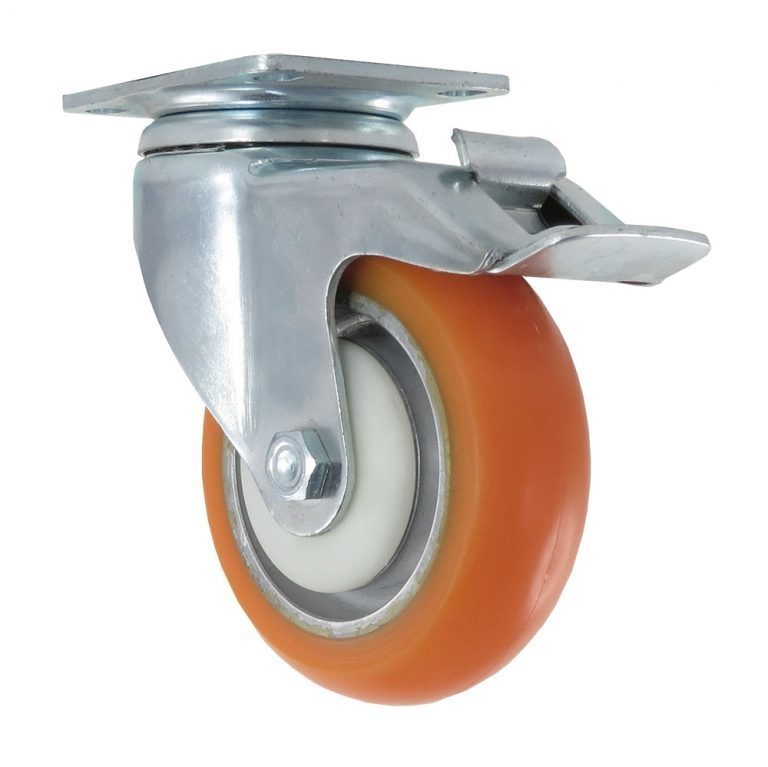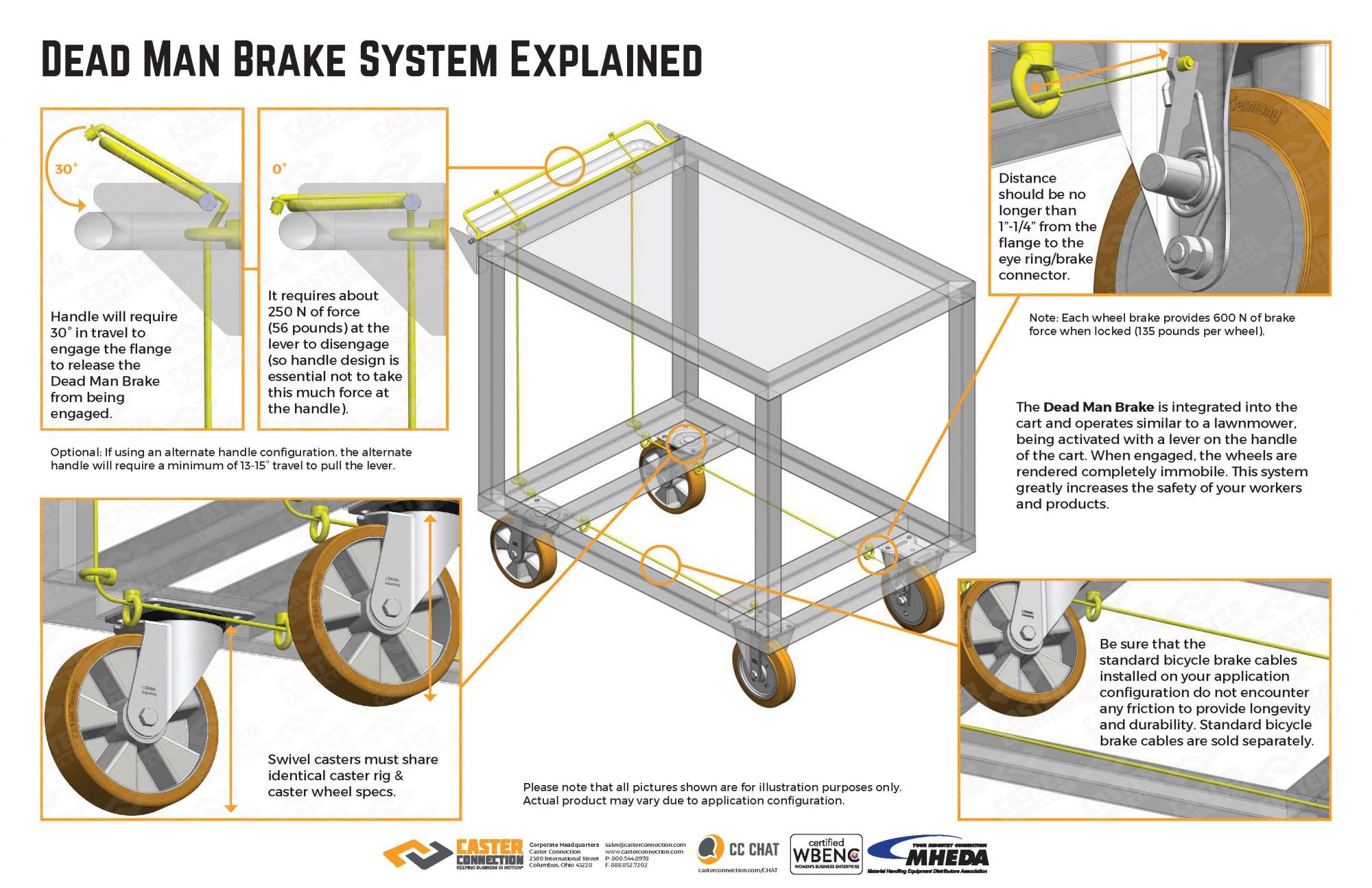Caster Brakes Overview

ULTIMATE GUIDE TO CASTER BRAKES
When you think of wheels, you think of moving something to somewhere else. Wheels, and particularly caster wheels, are great for moving stuff, but any of us riding the teacups with our kids at Disneyland knows that all “good” things in motion need to stop at some point. This applies to teacups or casters alike. This is where brakes come in, and casters have a bunch of different types of brake options to keep your stuff where it belongs. To make sure you get the right caster brake for your business or project, we’ll address the most important types of brakes for casters. We’ll also provide links to other articles and videos connected to brakes and how to apply them. Also, at any given time, one of our Solutions Managers is always ready to answer any questions you might have about brakes if this information doesn’t clear things up for you. Now, let’s get started with the braking.
CONSIDERING CASTER BRAKES EXPLAINED
Let’s start with a simple statement: a brake’s only function is to stop. This could be a bike, a caster, or a tank. Brakes stop in two main ways: they either stop something that is already moving, or they stop something from moving. With casters, brakes almost always stop something from moving, and they do this in specific ways. Manufacturers normally group brakes into different classes based off of where the braking mechanism touches the caster wheel or how we apply pressure. There are around a dozen different relatively common types of brakes, but six or less of these are more common for business applications. Remember that each one of these types or brakes has plenty of options to consider as well, and we will provide links to other articles when they apply. Before we get into the main groups of caster brakes, I want to stress that there are a lot of different reasons why a given brake might be right for you, but begin to think about how you are going to use these on a daily basis. Will you be pressing on the brake repeatedly throughout the day? Will you be pressing on the brake and then leaving it there until you retire? Remember, it will be you and your crew who will be enjoying or cursing the brakes each day. This mindset will help you choose the right brakes for your application. Now, here are the main groups.










